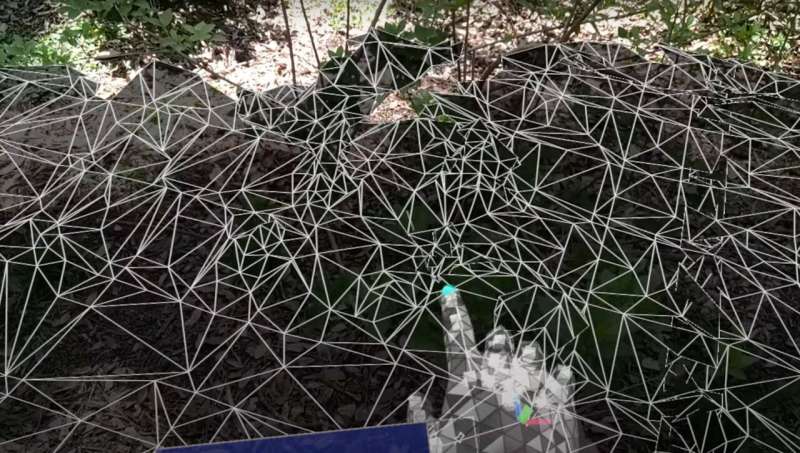Rice University scientists used a commercially available mixed-reality headset with custom-designed software to measure and analyze forest floor vegetation, demonstrating a correlation between animal diversity and the mapped habitat of a Tanzanian national park. According to the paper published in the journal Ecology, the greater the microhabitat surface area, the richer the biodiversity of its mammals.
Traditional habitat field research requires a significant amount of time and effort, but Rice postdoctoral researcher Daniel Gorczynski reduced those costs by incorporating a Microsoft HoloLens with his innovative VegSense software. Gorczynski and his advisor, assistant professor of biosciences Lydia Beaudrot, created VegSense to help researchers measure animal habitats, while the HoloLens was initially designed to improve work quality and outcomes in manufacturing, engineering, health care and education.
“Because the HoloLens is a mixed-reality device, you can see both the projected mesh over the forest structure as well as your local surroundings,” Gorczynski said.
Working in Tanzania’s Udzungwa Mountains National Park, Gorczynski partnered with scientists from the Udzungwa Ecological Monitoring Center and the University of Florence in Italy to leverage his VegSense shape and configuration measurements from the forest floor with data from motion-activated trail cameras set to observe mammal populations in the park.

Rice University’s open-source VegSense app for the Microsoft HoloLens headset allows researchers to record data about vegetation they see as they walk through a field site and create downloadable files for later analysis. © Brandon Martin/Rice University
“We identified 31 points within the protected forest to collect paired camera trap and HoloLens data and used a novel type of model to assess the statistical relationship,” Gorczynski said. “We found that mammal diversity did indeed increase with forest floor habitat surface area as measured by the HoloLens.”
Not only did the number of mammal species increase at locations with high habitat surface area, but the species also presented a greater variety of ecological characteristics, such as greater variety of body sizes and dietary requirements. Gorczynski hopes these results will encourage more focused efforts to designate high surface area habitats as protected.
“Tropical forests have some of the most unique and diverse mammal communities on Earth,” Gorczynski said. “In these forests, mammals perform lots of important roles that help maintain the ecosystem, such as dispersing seeds, moving nutrients through the ecosystem and controlling the populations of other species through herbivory and predation.”
Gorczynski said the HoloLens is easy to learn to use. He has taught several scientists, technicians and students in Tanzania and Madagascar to incorporate it in their data collection, and he is already imagining potential collaborations where the standardized, scalable data accumulated through a HoloLens could be used in tandem across multiple sites.
“Dan knew he wanted to study mammal functional diversity and hit the ground running when he joined my lab,” Beaudrot said. “He wasted no time diving into his first research project in his first month and proceeded to publish five first-author publications during his Ph.D., including this final HoloLens paper in one of the leading journals in our field.”
More information:
Daniel Gorczynski et al, Tropical forest mammal occupancy and functional diversity increase with microhabitat surface area, Ecology (2023). DOI: 10.1002/ecy.4181
Citation:
Researcher scans tropical forest with mixed-reality device (2023, October 19)



